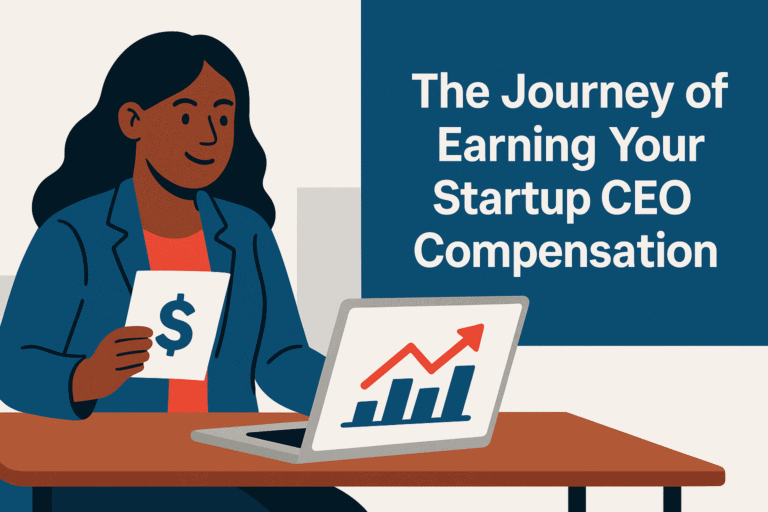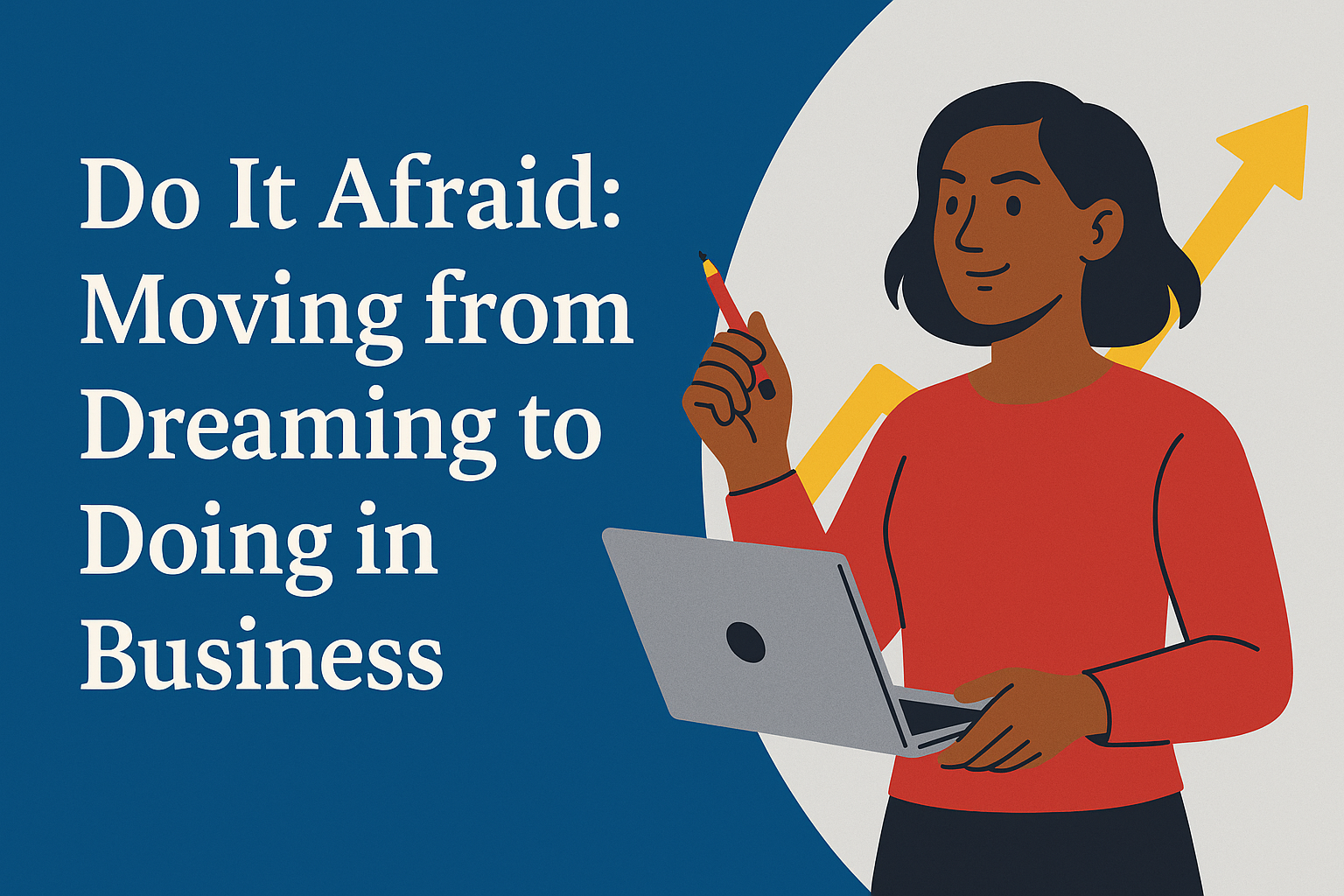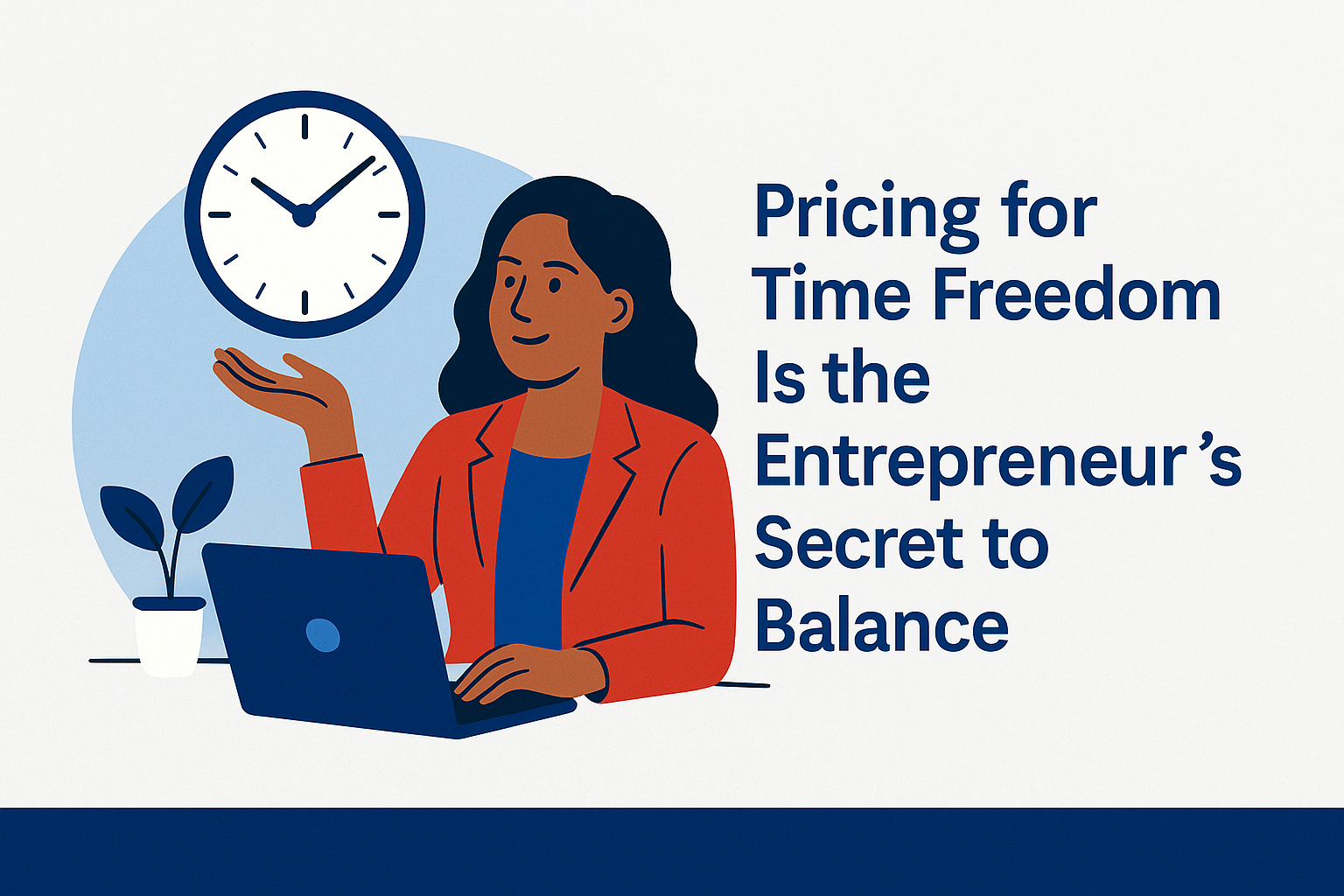Financial Freedom Friday
I didn’t fully grasp how critical cash flow was to business health until I went through the Profit Mastery program as a business advisor. That’s where I first learned that a business can be profitable and still fail if it’s cash flow poor. That insight shaped the way I taught cash flow forecasting models to small business owners who were doing their best—but couldn’t figure out why they always felt like they were behind.
I worked with founders who had steady income, manageable expenses, and solid offers. But they struggled to move forward. They weren’t overextended—they were out of sync. The money wasn’t showing up when they needed it. That’s what made things hard—not a lack of profit, but a lack of timing.
That’s where cash flow forecasting models come in.
They help you predict when money is actually available—so you can stop guessing, stop stalling, and start making more confident decisions in your business. Whether you’re running your business full-time or building it on the side of a demanding job, this is one of the simplest ways to bring clarity and control into your financial plan.
Let’s delve into what cash flow forecasting models are, how they work, and how to use them to make smarter, steadier decisions—even if you don’t consider yourself a numbers person.
What Are Cash Flow Forecasting Models?

Think of it like a weather forecast—but for your finances. You’re not trying to control every outcome. You’re trying to see ahead so you can prepare. Instead of reacting to surprise expenses or wondering whether you can afford to reinvest, you can spot tight spots early and make better decisions in advance.
Unlike a budget—which is usually a static plan—cash flow forecasting is dynamic. It changes as your business grows, your pricing shifts, or your timing changes. A forecast shows you how long your money will last, where the gaps might be, and when you’ll have room to move.
For busy founders, especially those juggling a job and a side business, this is powerful. It means you can map out your next few weeks or months and see if things are moving in the right direction before you commit your time, energy, or cash.
1. Direct Cash Flow Forecasting (Short-Term)
This model looks at real, expected cash activity—what money is coming in, what’s going out, and when. You base it on actual invoices, subscriptions, bills, and revenue timing.
It’s the go-to model for managing the next 4–12 weeks of your business. Think: “Can I pay myself next month?” or “Do I have enough to cover that course, software, or contractor?”
Why it works:
It gives you a clear picture of your financial runway so you can make timely, informed decisions—like when to invest, when to hold, or when to pay yourself—without second-guessing your cash position.
2. Indirect Cash Flow Forecasting (Long-Term)
 This model pulls from projected sales, growth assumptions, and financial reports to look further out—usually 6 to 24 months. It’s useful when you’re starting to think about big-picture questions: “When can I leave my job?” or “Can this business realistically support me by next year?”
This model pulls from projected sales, growth assumptions, and financial reports to look further out—usually 6 to 24 months. It’s useful when you’re starting to think about big-picture questions: “When can I leave my job?” or “Can this business realistically support me by next year?”
It connects cash flow to broader goals, like replacing your salary or scaling a signature offer. While it’s more abstract than the direct model, it gives you room to test “what if” scenarios—without risking real cash.
Why it works:
It aligns your revenue goals with your reality. And when paired with short-term forecasting, it helps you grow with intention instead of burning out from trial-and-error.
How to Get Started Without Fancy Tools
You don’t need an MBA or expensive software to use cash flow forecasting models. You just need a system that gives you a clear view of what’s coming in, what’s going out, and when.
Honestly? I’ve helped founders build their first forecast in a spreadsheet with four columns and a handful of numbers. The key isn’t perfection—it’s visibility.
Start here:
Column 1: Date or Week
Column 2: Expected Cash In (invoices, sales, contracts)
Column 3: Expected Cash Out (subscriptions, tools, payments)
Column 4: Running Balance
Pick a 30-day window. That’s it. Don’t try to map the whole year. Just forecast the next few weeks. Add your expected income on the dates you think it’ll actually land—not when you invoice, but when you believe you’ll see it in your account. That’s the part most people miss. Invoicing doesn’t pay your bills—cash does. Then list out the expenses you know are coming.
As you move through each row, subtract your expected expenses from your income to get a running balance. By the end of the list, you’ll see whether you’re ahead or behind—and where things might get tight. That’s your signal to adjust before you’re in the red.
Here’s a simple example of a direct cash flow forecasting model in a table format—perfect for someone just starting out. This shows how expected income and expenses play out over a short period, with a running balance to reveal cash position week by week.
Example: 4-Week Cash Flow Forecast (Simplified)
| Week | Expected Cash In | Expected Cash Out | Running Balance |
|---|---|---|---|
| Starting Balance | $1,200 | ||
| Week 1 | $500 | $300 | $1,400 |
| Week 2 | $0 | $450 | $950 |
| Week 3 | $1,200 | $600 | $1,550 |
| Week 4 | $0 | $700 | $850 |
How it works:
Starting Balance is the amount of cash on hand today.
Each week, you list what cash you expect to come in and go out.
The Running Balance is updated each week:
Previous Balance + Cash In – Cash Out = New Balance
In this example:
You start with $1,200.
In Week 2, there’s no income, and expenses are higher—your balance dips.
Week 3 gives you a buffer again.
Week 4 ends with a smaller cushion, letting you know in advance that cash might get tight soon.
This simple setup helps you catch those dips before they cause stress.
You can always upgrade later—tools like Zoho Books, Float, or even Google Sheets with a few formulas can take you further. But the point is: don’t wait for the perfect app to start getting clear.
Clarity starts with a decision: “I want to know.” After that, the model is just a mirror. It shows you what your business is already doing—so you can decide what you want it to do next.
What a Forecast Tells You (That a Budget Doesn’t)
 A lot of people build a budget and think they’re set. But budgets are like blueprints—they show you the structure, not the movement. They tell you what you plan to spend, not when the money is actually coming or going. And that’s the problem.
A lot of people build a budget and think they’re set. But budgets are like blueprints—they show you the structure, not the movement. They tell you what you plan to spend, not when the money is actually coming or going. And that’s the problem.
Cash flow forecasting models show you timing. They show you whether that $2,000 invoice you sent out will hit your account before or after your bills are due. Whether you can afford to hire help this month or if you’ll be cutting it close. Whether now is the time to invest—or hold back a bit longer.
A good forecast gives you:
Space to breathe: You’re not waiting on every dollar to make the next move.
Room to plan: You can look ahead and adjust instead of reacting in panic.
Confidence to pay yourself: Not randomly, but based on what’s actually available.
And here’s what surprised a lot of founders I’ve worked with: forecasting isn’t just for the slow months. It’s also especially useful when your business is growing. Because growth eats cash. And if you’re not watching your timing, you can be pulling in record revenue and still be broke.
You need more than a general sense of how your business is doing. You need a way to see how it’s moving—and that’s what cash flow forecasting models do best.
Common Mistakes to Avoid
One of the most common problems I’ve seen—especially with newer founders—is forecasting based on how they wantthings to go, not how things actually work. They open a spreadsheet and start plugging in numbers based on goals, not data.
But cash flow forecasting models aren’t vision boards. They’re decision tools.
You can aim high with your goals. But when you forecast, you need to ground it in reality. Use data you already have—your last three months of income, your typical payment timelines, your actual recurring costs.
Here are a few places where that disconnect usually shows up:
1. Basing income on hope, not history
It’s easy to say, “I plan to bring in $3,000 next month,” but where’s that number coming from? Do you have booked clients? Outstanding invoices? A pattern of consistent sales? A strong forecast might say: “I sent $2,500 in invoices—70% usually pay on time, so I can reasonably expect $1,750.”
2. Skipping recurring expenses
You’d be amazed how often people forget the predictable stuff: subscriptions, software, domain renewals, Zoom, Canva, Dropbox. Just because it’s not a one-time bill doesn’t mean it’s not costing you every single month.
3. Treating forecasting like a one-and-done
The forecast is a living tool. It’s not something you set up and never look at again. Your expenses change. Your income timing shifts. You don’t need to overhaul it constantly, but you do need to update it regularly—especially when your plans change.
4. Leaving out your own pay
If you’re planning to use business income to pay yourself—even partially—it has to show up in the forecast. Otherwise, you’re looking at a version of your business that only survives if you work for free. That’s not sustainable.
5. Trying to make it perfect
You don’t need complex formulas or color-coded charts to get value out of forecasting. You just need to be consistent, honest, and willing to look at the numbers—even when they’re uncomfortable.
Cash flow forecasting isn’t about being overly conservative or wildly optimistic. It’s about getting clear enough to lead your business on purpose—not based on hope, but based on what the numbers are actually telling you.
The Real Goal: Freedom from the Financial Guesswork

That doesn’t mean you’ll always love what the forecast shows you. Sometimes it will confirm that you need to hold off on something you were excited to invest in. Other times, it’ll show you that you’re in better shape than you thought—and give you the green light to move forward. Either way, you’re making decisions with eyes wide open.
And that’s what real freedom looks like.
When I rebuilt Backbone America, one of the biggest shifts for me was deciding I never wanted to operate from financial fog again. I’d seen too many brilliant founders burn out—not because they didn’t have good ideas, but because they were stuck in that guess-and-hope loop. They were flying blind and paying for it with their energy, their time, and in some cases, their health.
If your business is going to give you the freedom you’re working for—freedom to leave your job, freedom to travel, freedom to live on your own terms—it has to be financially stable. And stability comes from knowing what’s ahead, not just reacting to what’s already happened.
That’s the power of forecasting. It’s not about spreadsheets. It’s about strategy.
And it’s one of the simplest ways to stop wondering whether you’re ready—and start making your next move with confidence.
Ready to See Your Cash Flow More Clearly?
If you’ve never created a forecast before, don’t worry about doing it “right.” Just open a blank spreadsheet or notebook and write down what you know:
What money is likely to come in over the next 30 days?
When do you expect it to hit your account?
What payments, bills, or expenses are scheduled to go out?
That’s your starting point.
You don’t need fancy formulas or tools. You just need a moment of quiet, a little bit of data, and the willingness to be honest with yourself about what’s really happening in your business.
This week, I challenge you to carve out 30 focused minutes—just one session—to sketch out your first short-term forecast. No pressure. No perfection. Just clarity.
You deserve to make decisions based on facts, not fear.
And your future self—the one who’s already working with ease, not overwhelm—will thank you for starting today.






